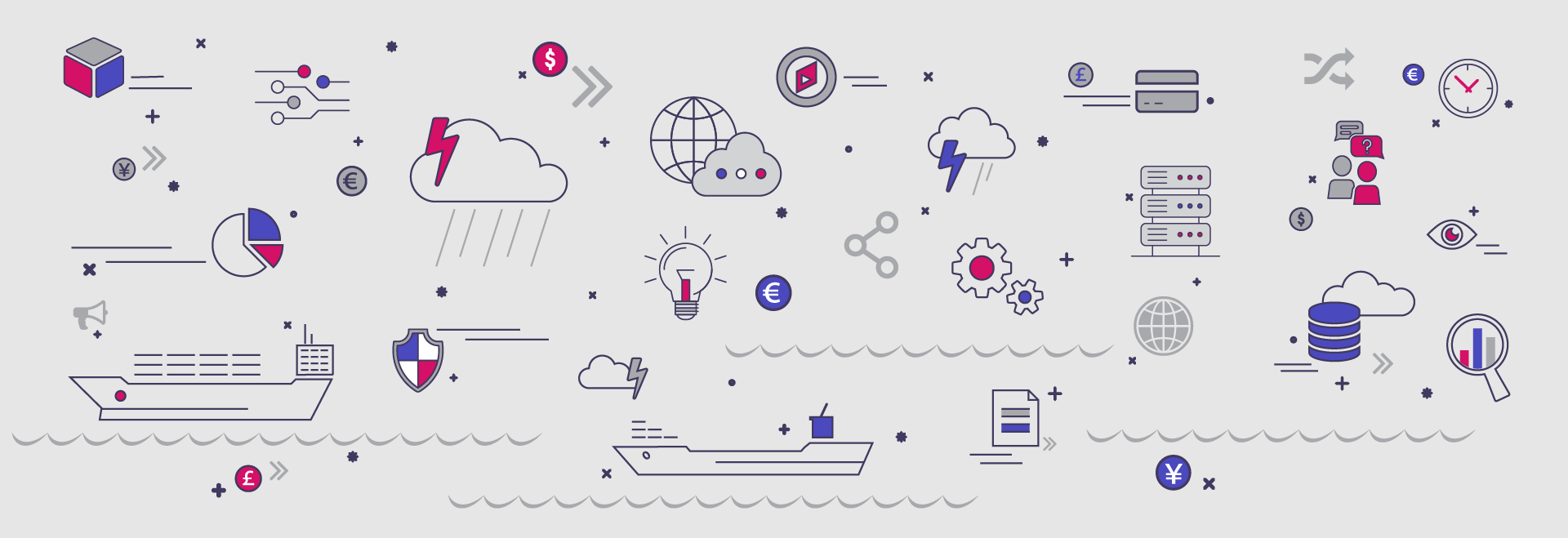Making the Case for Treasury Technology

The Burden of Today’s Treasurer
As the world becomes more connected, many corporations are experiencing strong growth and increased complexity. In the midst of these changes, treasury practitioners are struggling to keep up with the coinciding heightened expectations. In a majority of organizations, the treasury staff consists of fewer than six people, yet they are administrators of multiple systems, stewards over working capital processes, and gatekeepers to safeguarding data and liquidity from security risks or attempted fraud. Simply put, the responsibilities often far outweigh the capabilities of a limited staff, leaving treasury practitioners struggling to meet objectives and leaving the company exposed to unnecessary risks.

Treasury is responsible for a broad list of responsibilities and functionalities, many of which extend beyond traditional cash and payments management. Responsibilities often include FX trading, risk management, accounting and reconciliations, and investment/debt management. With many tasks to be accomplished, treasury technology can often be a wise and worthwhile investment providing increased automation and efficiency. Though the benefits may be obvious to the treasurer, internal competition for resources and capital spend necessitate a strong business case that identifies both strategic and financial benefits.
Elements to Consider Regarding a Solution
As a treasurer considers the business case for treasury technology, there are five elements that corporations must consider. The first is flexibility. The operation of any technology should be flexible enough to handle growth and an ever-changing environment. For example, when starting a business transaction in a new country, one’s existing technology should be able to process these new payments, even if small modifications are required. The next important element is insight. A technology system must provide analysis on how a combination of events can impact other areas of the business. For example, changes in interest rates impacting cash flow or FX fluctuations might have downstream effects on invoices. Just as insight is essential, so is visibility. No matter how the treasury department is structured, there should be visibility into cash and risks. At a corporate consolidated level, one should be able to visualize where cash is located around the world and be able to manage exposures.
Finally, there are the strategic elements of efficiency and control to be considered. Technology systems should be efficient, without redundant processes that are prone to error. This allows treasury to focus on being strategic rather than the individual data entry. And one cannot overlook the increasing and changing world of fraud. Cyber fraud, breaches of data, and phishing schemes are increasing daily and companies must take all possible precautions to prevent losses. A TMS / TRMSTreasury Management System / Treasury Risk Management System can provide essential preventative controls and risk mitigation, increased accuracy in money management, and centralized connectivity for accounts and processes.
Calculating a Return on Investment
Determining ROI is also important in order to explain what is gained through the adoption of a TMS / TRMS. This can be a less-than-straightforward since the costs vary in their ability to be measured quantitatively, but it is not impossible. The costs of treasury technology include the monetary costs of the system, implementation, training, and maintenance, and the opportunity cost of how the funds could have been otherwise allocated. This is then compared to the savings the technology provides. Savings include the time saved when manual tasks become automated, as well as monetary savings when errors are eliminated with said automation. More accurate cash forecasting must be considered as well, as it can ultimately increase revenue.

Quantitative ROI considers the following:
- System maintenance and hardware costs
- Connectivity and data transformation costs
- Data charges and data cleansing charges
- Staff time savings (Treasury, IT, Accounting, A/P etc.)
- Capital usage and efficiency gains
- Reduced fees and charges for transactions
What drives the investment of capital in treasury technology? The answer lies in the treasurer’s ability to present the ROI, strategic benefits, and risk and control elements of a TMS / TRMS to decision-makers at the company. By providing these facts, treasurers can free up the firm from lower value tasks in favor of higher value opportunities. It is a new era for treasury technology. Five years ago, options were limited and implementation was complicated and time-intensive. Now, treasury technology providers offer a variety of options, focuses, and capabilities.
The Burden of Today’s Treasurer
As the world becomes more connected, many corporations are experiencing strong growth and increased complexity. In the midst of these changes, treasury practitioners are struggling to keep up with the coinciding heightened expectations. In a majority of organizations, the treasury staff consists of fewer than six people, yet they are administrators of multiple systems, stewards over working capital processes, and gatekeepers to safeguarding data and liquidity from security risks or attempted fraud. Simply put, the responsibilities often far outweigh the capabilities of a limited staff, leaving treasury practitioners struggling to meet objectives and leaving the company exposed to unnecessary risks.
Treasury is responsible for a broad list of responsibilities and functionalities, many of which extend beyond traditional cash and payments management. Responsibilities often include FX trading, risk management, accounting and reconciliations, and investment/debt management. With many tasks to be accomplished, treasury technology can often be a wise and worthwhile investment providing increased automation and efficiency. Though the benefits may be obvious to the treasurer, internal competition for resources and capital spend necessitate a strong business case that identifies both strategic and financial benefits.
Elements to Consider Regarding a Solution
As a treasurer considers the business case for treasury technology, there are five elements that corporations must consider. The first is flexibility. The operation of any technology should be flexible enough to handle growth and an ever-changing environment. For example, when starting a business transaction in a new country, one’s existing technology should be able to process these new payments, even if small modifications are required. The next important element is insight. A technology system must provide analysis on how a combination of events can impact other areas of the business. For example, changes in interest rates impacting cash flow or FX fluctuations might have downstream effects on invoices. Just as insight is essential, so is visibility. No matter how the treasury department is structured, there should be visibility into cash and risks. At a corporate consolidated level, one should be able to visualize where cash is located around the world and be able to manage exposures.
Finally, there are the strategic elements of efficiency and control to be considered. Technology systems should be efficient, without redundant processes that are prone to error. This allows treasury to focus on being strategic rather than the individual data entry. And one cannot overlook the increasing and changing world of fraud. Cyber fraud, breaches of data, and phishing schemes are increasing daily and companies must take all possible precautions to prevent losses. A TMS / TRMSTreasury Management System / Treasury Risk Management System can provide essential preventative controls and risk mitigation, increased accuracy in money management, and centralized connectivity for accounts and processes.
Calculating a Return on Investment
Determining ROI is also important in order to explain what is gained through the adoption of a TMS / TRMS. This can be a less-than-straightforward since the costs vary in their ability to be measured quantitatively, but it is not impossible. The costs of treasury technology include the monetary costs of the system, implementation, training, and maintenance, and the opportunity cost of how the funds could have been otherwise allocated. This is then compared to the savings the technology provides. Savings include the time saved when manual tasks become automated, as well as monetary savings when errors are eliminated with said automation. More accurate cash forecasting must be considered as well, as it can ultimately increase revenue.
Quantitative ROI considers the following:
- System maintenance and hardware costs
- Connectivity and data transformation costs
- Data charges and data cleansing charges
- Staff time savings (Treasury, IT, Accounting, A/P etc.)
- Capital usage and efficiency gains
- Reduced fees and charges for transactions
What drives the investment of capital in treasury technology? The answer lies in the treasurer’s ability to present the ROI, strategic benefits, and risk and control elements of a TMS / TRMS to decision-makers at the company. By providing these facts, treasurers can free up the firm from lower value tasks in favor of higher value opportunities. It is a new era for treasury technology. Five years ago, options were limited and implementation was complicated and time-intensive. Now, treasury technology providers offer a variety of options, focuses, and capabilities.
A More In-Depth Look
Are you interested in learning more about how to build a business case for treasury technology? Download our ebook for a more comprehensive overview and do not hesitate to contact us for more information.
This eBook was published by Strategic Treasurer in partnership with Openlink Financial, an ION Group company. The link above directs to a download page within their website. Any information shared to access the publication will be subject to Openlink’s terms and conditions. Thank you for your interest in this topic. If we can be of help to you with more information or advice, please don’t hesitate to contact us at info@strategictreasurer.com.

Meredith Carpenter
Content Copywriter, Treasury Analyst
Meredith Carpenter works as a content analyst and copywriter in the market intelligence division of Strategic Treasurer, a top tier treasury consultancy headquartered in Atlanta, Georgia.


